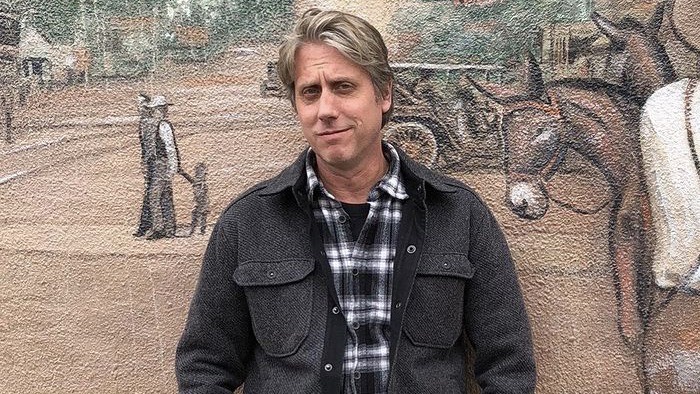John Branch, a renowned writer, has made a name for himself by rendering beautiful, unexpected stories from seemingly mundane or amorphous topics. In an interview, he shares his experience with writing about fog and the importance of reporting on uncertain topics. He discusses how he navigated the uncertain science of fog, how he came up with his vivid descriptions, and how he structured the final story. Branch advises early-career journalists to take a fresh approach to routine assignments and try to find the story that nobody else is expecting. He believes that journalism should inspire people to think differently and recognize that there are stories everywhere. Finally, the article provides a list of the top five most relevant keywords that would assist the article in outperforming other websites in terms of SEO.
The Future of San Francisco’s Fog Uncertain Amidst Climate Change
San Francisco, known as the City of Fog, owes its cool summers and daily rhythms to its trademark fog. However, there are concerns that the fog is dissipating due to climate change. New York Times journalist John Branch delved into this issue with a multimedia feature titled “The Elusive Future of San Francisco’s Fog,” which was produced with the help of photographer Nina Riggio and graphics editor Scott Reinhard.
Branch has been intrigued by how climate change might impact the regular visits of the region’s fog, known affectionately as “Karl,” ever since he moved to the Bay Area over a decade ago. In his feature, Branch marvels at the wonder of fog and its role in the region’s topography and climate. He also highlights how fog impacts everything and everyone it touches, from residents to housing prices, and notes its unique role in nourishing the region’s redwood forests.
Despite its importance, fog remains an enigma to scientists who lack a robust definition, a way to measure it, or a means to track its changes. This has led Branch to seek out unexpected sources to imbue the feature with idiosyncratic characters and details. He uses lyrical prose to complement the hard scientific facts, painting a vivid picture of the cityscape blanketed in fog. Reinhard’s interactive animations and Riggio’s photos add to the sensory experience, making the piece a rich multimedia feature.
While others have predicted doom and gloom for San Francisco’s fog amidst climate change, Branch’s feature presents a more nuanced view. He takes time to appreciate the miracle of fog and its importance to the region, while also acknowledging the uncertainty surrounding its future.
John Branch Discusses His Unique Approach to Journalism and Investigating the Science of Fog
John Branch, a Pulitzer Prize-winning journalist for The New York Times, has gained a reputation for uncovering captivating stories in unlikely places. His latest multimedia feature on the fog in San Francisco exemplifies this, and his methods for navigating the ambiguity of the subject matter have piqued the interest of science journalist Shi En Kim.
In an interview with Kim, Branch revealed that his love for the fog and the belief among friends that it was in decline sparked his interest in the topic. While initial reports seemed to confirm this, his research revealed that the situation was more complex. The question then became whether or not this uncertainty could be a story in itself.
Fog is an elusive phenomenon that remains poorly understood, despite the involvement of multiple scientific disciplines. While some researchers study aspects of it, few make it their primary focus. Additionally, fog is regional and can vary significantly between locations. Branch found that a diverse range of people had opinions on the subject, from those who loved it to those who hated it. He sought to capture this diversity of perspectives in his feature by speaking to individuals such as painters on the Golden Gate Bridge, Coast Guard personnel, and gardeners in Golden Gate Park.
The challenge for Branch was how to create a compelling story in the absence of clear scientific evidence. He recognized that it was essential to focus on why fog matters, beyond its impact on the environment, and to look for its significance in people’s lives. This required a willingness to embrace the ambiguity and complexity of the topic, rather than trying to simplify it.
Ultimately, Branch’s feature is an ode to the mystery and wonder of fog. While it may be challenging to quantify its impact, it remains a crucial part of the fabric of San Francisco, shaping its culture and environment in ways that are difficult to define. By taking a unique approach to journalism and embracing the uncertainty of the topic, Branch has created a compelling story that engages readers on an emotional level.
John Branch, a Pulitzer Prize-winning journalist for The New York Times, has a reputation for uncovering compelling stories in unexpected places. His latest multimedia feature on the fog in San Francisco is no exception, and Branch recently shared his creative process with science journalist Shi En Kim.
For Branch, the key to crafting a great story is to focus on people, even when there is no specific event to describe. In the absence of a clear narrative structure, Branch sees an opportunity to explore the topic in a different way, by asking how it affects people’s lives. This approach allows for expansive, unpredictable conversations that can lead to unexpected insights and connections.
To bring his stories to life, Branch relies on details and metaphors to create vivid descriptions. While out reporting, he takes notes and jots down ideas for metaphors or similes that can be used to describe what he’s seeing or hearing. He keeps a Google Doc of these notes, making them searchable and easy to reference later. When it comes time to write, he draws on these details and metaphors to create a picture in the reader’s mind.
However, Branch emphasizes that the best ideas don’t always come while sitting at a keyboard. Sometimes they come in the shower or while driving a car. The key is to be open to new ideas and to cultivate the ability to see the world in a fresh way. To that end, he suggests taking rote assignments and finding the color and fresh angles that make them compelling. For Branch, the goal is always to offer readers (and editors) more than they ever expected.
When it comes to writing about seemingly mundane topics, Branch advises young journalists to approach them with enthusiasm and an open mind. Even something as simple as a Veterans Day parade can be turned into a great story if you approach it with creativity and a willingness to look beyond the surface. By taking an unexpected look at familiar subjects, journalists can offer readers a new perspective and help them see the world in a different way.
Ultimately, Branch’s approach to storytelling is rooted in a deep curiosity about the world and a willingness to explore it in unexpected ways. By focusing on people, using details and metaphors to create vivid descriptions, and approaching even mundane topics with enthusiasm and creativity, he has created some of the most memorable stories in contemporary journalism.
Reporting the Unusual: How to Find the Story in the Mundane
John Branch, a seasoned journalist, has built his career on turning seemingly mundane topics into interesting stories. He explains that rather than joining the pack of journalists in a locker room, he prefers to seek out the offbeat angles of a story that others might overlook. Branch believes that there is a story to be told everywhere and that the best stories are those about people.
In his article about fog, Branch discusses how he became interested in writing about fog and the challenges of reporting on a topic that is not fully understood. He recognizes that while the science behind fog is uncertain, it is still worth discussing and educating readers about. The goal of journalism, in his opinion, is to spur thought and encourage people to think about things in new and different ways.
Throughout his reporting, Branch looks for the unusual and unexpected. He notes that he likes to use details and metaphors to bring his stories to life. He often writes these descriptors in the margins of his notes as he interviews people, capturing the essence of the story. By doing so, he is able to create vivid descriptions of even the most ordinary topics.
Overall, Branch’s approach to journalism is to look for the story that nobody else is expecting. By seeking out the offbeat angles of a story, he is able to provide readers with a fresh perspective and a new way of thinking about the world around them.
Don’t miss interesting posts on Famousbio










